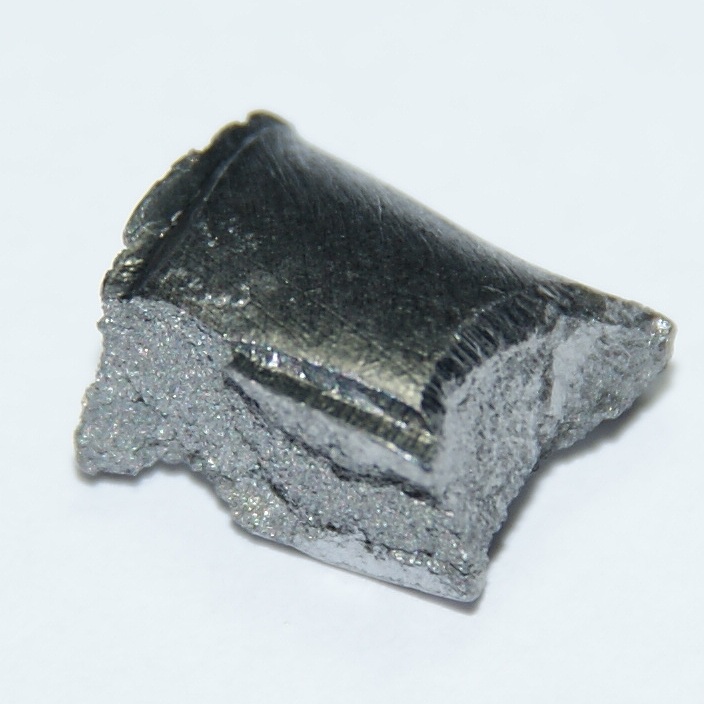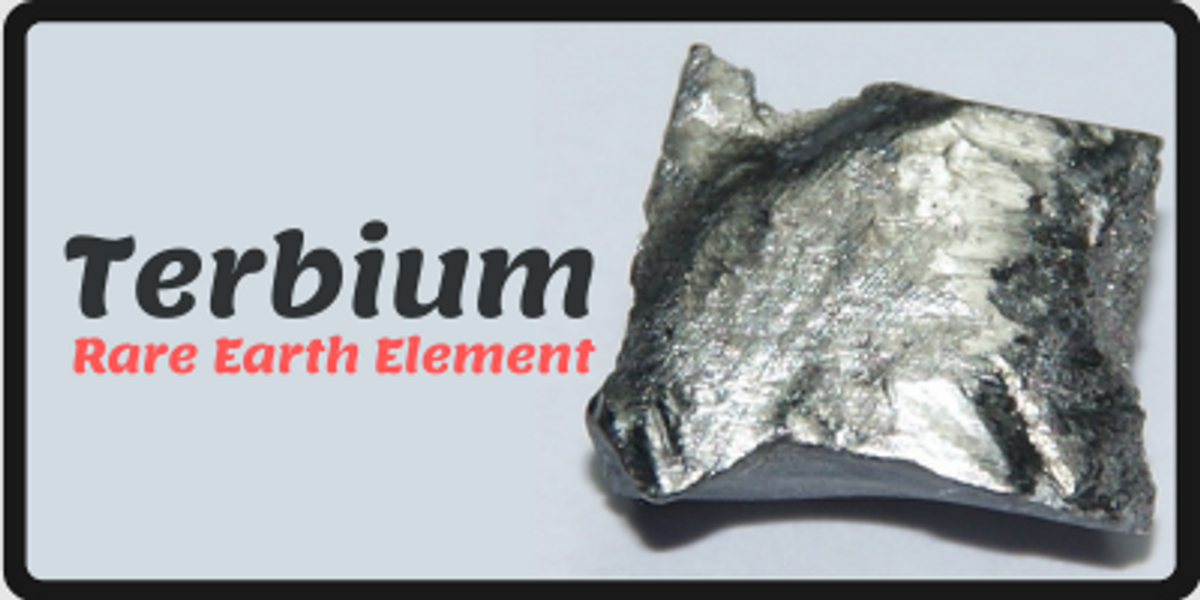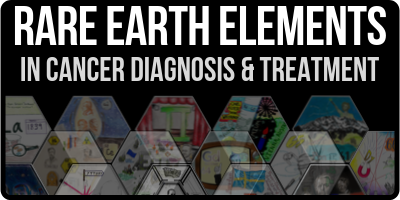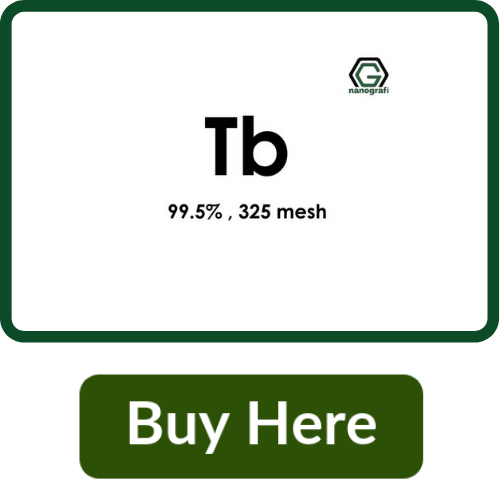Terbium Rare Earth Element - Nanografi Blog
Terbium was discovered in 1843 by C. Mosander. It is named for Ytterby, a Swedish town where the rare earth oxides were found. It is silver-gray metal, malleable, ductile and soft enough to be cut with a knife. The technical importance of terbium is found in various applications in catalysis and laser technology. In this article, we will discuss the history, properties, and applications of Terbium.
Terbium is a rare earth element and its symbol is Tb, a white metallic solid and silver luster. Its atomic number is 65, with an atomic mass of 158.9. Its melting point is 1,360 °C and its boiling point is 3,041 °C. It belongs to the lanthanide family of the Periodic System. And its usual state is like rust in the rare earths. It is the most rare metal in the group of lanthanides and actinides, it is a shiny silver metal, and stable in contact with air.
Terbium was identified in 1843 by Carl Gustaf Mosander in the Gadolinite at the same time as the Iterbium and the Erbium. However, its name was decided in 1877, after some confusion. The production of terbium only began after 1945 with the emergence of the novel ion-exchange technique.
Properties
The name of the terbium comes from Ytterby, the Swedish town that also gives its name to the elements yttrium (Y), erbium and Ytterbium, in which the great chemist Carl Gustaf Mosander, also Swedish, discovered the element as an impurity of yttrium oxide in 1843. Mosander managed to separate 3 materials from the gadolinite minerals, two of them were the elements erbium and terbium. However, the terbium was not isolated until 1905, when the chemist Frances Georges Urbain succeeded for the first time.
Terbium is one of the lanthanide elements, it is a silver-colored and somewhat shiny metal that is relatively stable in the air, is easily malleable, ductile and soft enough to be cut with a knife. Currently, two crystalline forms of terbium are known, which have a transformation temperature of about 1290 °C.
In its oxide form, the heavy and soft metal has a dark brown color. Terbium and its chemical components are toxic, the dust of metal is flammable and explosive. It is so soft that it can be cut with a knife and is quite stable.
Its oxide is of a characteristic dark brown (chocolate) color and 21 terbium isotopes are known. There is still much to discover about this element and very little is known about its toxicity, which is why the terbium should be handled with care. As we have seen that it occurs with many other elements belonging to the so-called "rare earth", in nature, the terbium can be found in minerals, especially those of cerite and gadolinite.
Terbium is obtained from the ionic exchange of monacite sand with material rich in lanthanide and actinide elements. Erbium oxide has a chocolate brown color and is obtained by heating its salts in the air. All salts of the terbium are trivalent and have a white color.
It is also obtained by reduction with the calcium of the anhydrous terbium chloride or fluoride in a tantalum crucible. Calcium and tantalum impurities are removed by subsequently melting the product obtained in vacuo.
General Properties
At room temperature, it is in a solid-state with a silvery gray appearance. It is a malleable and ductile material that in principle can be easily deformed or cut by having Young's module of 55.7 GPa, an amount that tells us the degree of deformation before an effort. It presents two allotropic forms, that is to say, composed of the same element with different molecular structures, producing a transition between them at 1289 degrees. This is highly electropositive, so it reacts with water and is stable in air. The toxicity of the terbium has not been studied in detail, although it can be considered slightly toxic by ingestion and the compounds in the form of powders are highly irritating to the skin and eyes.

Triboluminescent Properties
Some terbium compounds also have triboluminescent properties, that is, they emit light under mechanical or thermal stress. In particular, certain aluminosilicates doped with Tb 3+or terbium crystals under fracture emit light at a certain wavelength. On the other hand, there are several solid-state devices composed of calcium fluoride and strontium molybdate doped with terbium and terbium sulfate solutions that are used in lasers to make the light beam coherent. Terbium together with zirconium oxide is used as a stabilizer of solar cells that operate at high temperatures and is also useful in the detection of certain microorganisms since it reacts with a component of these producing a characteristic photoluminescent spectrum. An example of these organisms is the endospores, which are cells produced by some bacteria and are resistant to external factors such as radiation. The security of a population could depend on the timely detection of these as it was in the case of attacks in 2001 with bacteria that cause anthrax and circulated through the postal service in the United States.
Optical properties of Terbium
The optical properties of the terbium make the Tb3+ cation emit an intense green light and several crystalline oxides doped with it, under the excitation of ultraviolet light, emit light at a certain wavelength. Europium Eu3+ and the Tulio Tm3+ they show similarity in their luminescent properties with the terbium since the europium emits light in red and the tulium in blue. This triad of elements is used in the security code in euro bills, which when illuminated with ultraviolet light fluorescein green, red and blue. Terbium and Europium are part of trichromatic light technology in interior lighting and in the emission of primary colors on TV screens. However, the main application of terbium is in fluorescent lamps where terbium oxide is commonly used as a fluorescent substance. In addition, certain transparent ceramic materials doped with terbium-containing compounds change their luminescent properties.
Applications of Terbium
Terbium has below important applications:
1.This chemical element has certain commercial applications, among which its use as a glass stabilizer when combined with zirconium dioxide, in fuel cells at elevated temperatures can be mentioned.
2.In medicine, terbium is used as a factor in improving safety in exposure to x-rays allowing the same image quality with shorter exposure time.
3.When terbium and sodium borate binds, it becomes a laser material capable of emitting coherent light at 5,460 Å. Also, terbium oxide, with its characteristic dark brown color, is potentially applicable as an activator for the production of green color in color television tubes.
4.It has applications in alloys, refractory materials, and electronic devices. Sodium and terbium borate is used in transistorized devices, oxide, Tb2O3, is used as an activator of green in the image tubes of color televisions.
5.It can be used together with ZrO2 as a stabilizer in fuel cells operating at elevated temperatures.
6.Sodium and terbium borate is a laser material and emits coherent light at 5460 Å.
7.Terbium has several commercial applications. Its most current use is crystal stabilizer in high-temperature fuel cells, but only when combined with zirconium dioxide.
8.Terbium oxide, dark brown, has potential applications as an activator to produce green color in TV tubes.
9.Terbium, together with zirconium dioxide, is used as a crystalline stabilizer of fuel cells that operate at high temperatures.
10.Terbium is used in doping materials used in solid-state devices, such as calcium tungstate and strontium molybdate.
11.It is one of the metals whose supply is most critical. Like dysprosium, neodymium, or europium, it is essential for luminescent substances, magnets, and phosphorescent substances. Due to its great importance for small magnets, it is promised to a great future.
12.It is also used as a stabilizing glass in fuel cells that operate at high temperatures, together with zirconium oxide, in alloys and in the production of electronic components. Its oxide is used in green matches of fluorescent lamps and imaging tubes. Terbium and sodium borate is also applied in electronics.
13.Like other elements, terbium can be found in equipment such as color televisions, fluorescent lamps, and crystals. By belonging to this group, it has properties comparable to the other elements of the so-called lanthanides and actinides or rare earths.
14.Due to its ferrous magnet talents, terbium is ideal for the production of magnetic building components such as the neodymium-boron-steel magnets.
15.Terbium is added to semiconductors and it serves as an enhancer element for fluorescent and luminescent substances. With Zirconium dioxide, it serves to stabilize fuel cell cells at high temperatures. In addition, terbium oxide is used for green luminescent substances in cathode tubes and fluorescent bulbs.
Click Image to Learn Rare Earth Elements' Application in Medicine
Surely there is a lot to discover with the terbium and its compounds and many other applications will be obtained. There is already talk of using its triboluminescent property in fiber optic sensors that measure changes under mechanical stress, for example in the wings of an airplane and in infallible safety codes (with europium and dysprosium) to combat counterfeiting of products such as medicines or in works of art.
Effects of Terbium on the Environment
Like other elements belonging to the group of lanthanides and actinides, terbium is rarely achieved in the environment. It can be discharged into the environment by the disposal of domestic equipment and as a result of the activity of the oil industry. This situation causes the terbium to accumulate in the soil and thus can pass into the waters, which increases the concentrations that can be located in animals and humans and can cause damage to the cell membranes of the animals, as well as problems in the functioning of the nervous and reproductive system thereof.
In conclusion, Terbium is so soft rare earth metal that it can be cut with a knife. In fact, it is not noble, but in the open air, it is relatively stable. The chemical element terbium was discovered by Carl Mosander in 1843. Its name is derived from the Swedish city of Ytterby where it was discovered. Terbium has countless applications due to its exceptional characteristics. Terbium aggregates with semiconductors and acts as an active agent for fluorescent and luminescent substances. With zirconium dioxide, it is used in high technology sectors as a cell stabilizer in high temperature fuel cells. In addition, the oxide is used for the green luminescent substance in cathode ray tubes and fluorescent lamps. Due to its property as a ferrous magnet, this metal is well suited to the production of magnetic construction elements.
References
https://www.sciencedirect.com/topics/earth-and-planetary-sciences/terbium
https://www.rsc.org/periodic-table/element/65/terbium
https://journals.aps.org/pr/abstract/10.1103/PhysRev.112.56
https://onlinelibrary.wiley.com/doi/abs/10.1002/ejic.200400750
https://www.sciencedirect.com/science/article/abs/pii/0304885386907651
Recent Posts
-
Cellulose Nanocrystals (CNC) in Food Industry
Cellulose nanocrystals (CNC) are emerging as a pivotal material in the realm of food technology, her …3rd May 2024 -
Reducing the Carbon Footprint of Nanomaterials
The production of nanomaterials is vital for numerous advanced applications, from healthcare to elec …26th Apr 2024 -
Nanocomposites in Food Packaging
The utilization of nanocomposites in food packaging represents a significant advancement in the fiel …19th Apr 2024








